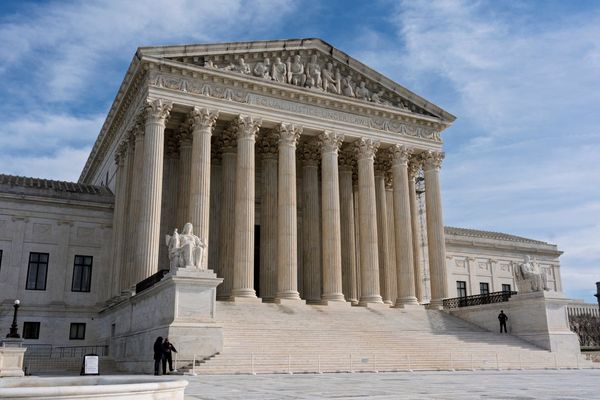ORLANDO, Fla. — The National Women’s Soccer League released a policy for the eligibility of transgender athletes on Wednesday, which was International Transgender Day of Visibility.
The league partnered with the National Center for Lesbian Rights to create the policy. The NWSL general counsel wrote the first draft of the policy, then sent it to NCLR senior staff attorney and transgender youth project director Asaf Orr.
Over the past six months, the policy was reviewed and edited by Orr, the league and the NWSL Players Association. It was approved by all three parties before being formally enacted by the NWSL, which begins its 2021 season April 9.
Orr said he believes adopting this type of policy is an important step for major sports leagues to provide inclusion for transgender and nonbinary athletes.
“This policy is evidence based, it’s very progressive and it ensures that trans folks and nonbinary folks can compete and play the sport that they love and continue to push the sport forward,” said Orr, who is cisgender, a term used for someone whose gender is exclusively the one they were assigned at birth. “I think that this policy, it places the league in a real leadership position.”
The policy includes specific rules regarding testosterone levels in transgender athletes. Under these new guidelines, transgender players’ testosterone levels must be in the “typical limits of women athletes” to compete in the league.
The NWSL specified this standard to be below 10 nanomoles per liter (nmol/L), although the policy said this is “subject to change based on the most up-to-date medical and expert information available at the time of implementation.”
Orr said this part of the policy was based on the standard used by the International Olympic Committee, which first enacted a policy for transgender athletes in 2003.
According to studies by the Mayo Clinic, the standard testosterone level for adult cisgender men over the age of 19 is 8.3 to 32.9 nmol/L and the standard level for adult cisgender women over the age of 19 is 0.3 to 2.1 nmol/L.
The league didn’t specify if these testosterone levels would become a requirement for cisgender players in the league. Orr said he didn’t interpret the policy to include testosterone requirements for cisgender women in the league.
Any athlete assigned female at birth will be eligible to compete in the NWSL, according to the policy.
However, players using testosterone through hormone replacement therapy (HRT) to treat gender dysphoria might not be eligible to play in the league.
Players can remain eligible while taking low doses of testosterone, but they must receive an exception at the league’s discretion and remain within the set level of “typical limits of women athletes.”
The policy also states that trans women undergoing HRT must meet and maintain the specified testosterone level for 12 months before becoming eligible for league competition. Players can become ineligible again if their testosterone levels spike above the set limit during offseason testing.
Additionally, a transgender player who declares their gender as female can not change that declaration for sporting purposes for at least four years. The policy doesn’t articulate how a player formally undertakes the process of declaring their gender to meet this requirement, and also doesn’t specify how this would apply to nonbinary athletes.
Orr said he believes the policy still welcomes nonbinary athletes despite this lack of language. The only out trans player currently competing in the NWSL — OL Reign midfielder Quinn — identifies as nonbinary.
“I think the focus of the policy is about folks who require medical treatment for their gender dysphoria,” Orr said. “So this policy kind of sets a framework for addressing the needs of players who are transgender or nonbinary. ... It creates a way for the league to be transparent about how it’s going to evaluate the eligibility of trans and nonbinary folks who seek to compete in the league.”
Under the policy, trans players will be monitored through testing at “the NWSL’s sole discretion based on standards of reasonableness and fairness and in consultation with physicians and medical experts as selected by the NWSL.”
If a player’s testosterone levels are reported above the league minimum, the player will be suspended for 12 months.
Mandated testosterone limits previously have caused controversy in women’s sports.
The International Association of Athletics Federations created a policy in 2018 that required athletes to maintain a testosterone level of 5 nmol/L for at least six straight months to be able to compete as a woman.
The policy disqualified South African track star Caster Semenya — a cisgender woman born with naturally elevated testosterone levels — from competition.
Under the new NWSL policy, teams and athletes will also be allowed to challenge a player’s gender identity through a formal process.
The policy specifies the “request must be made formally and in writing” and the league will “only consider requests that are reasonable and made in good faith.” Orr emphasized that these requests can only be made during the offseason.
“From my perspective, the key protection in there for the transgender or non binary players is that those complaints are only going to be considered in the offseason as part of the league’s typical annual check of everyone’s eligibility,” Orr said. “This is not something that can be used as a mechanism to harass or intimidate another player or in any way kind of affect the players’ morale or team morale in the midst of the season or even the postseason.”
The league’s announcement of the policy came amid nationwide debate over the inclusion of transgender athletes in sports competitions. Florida is currently one of 25 states considering legislation to ban transgender athletes from competing in women’s sports leagues.
Speaking to the House Oversight Committee on Equal Pay Day, NWSL star Megan Rapinoe voiced her support for all trans women and nonbinary folks to be able to participate in women’s sports.
Orr believes the NWSL’s policy could impact this national conversation.
“The other thing that the NWSL does by putting up this policy is it shows to state legislators and others that there are ways of ensuring that transgender athletes feel welcome and included in sport,” Orr said. “It shows these bans are dangerous and harmful.”







